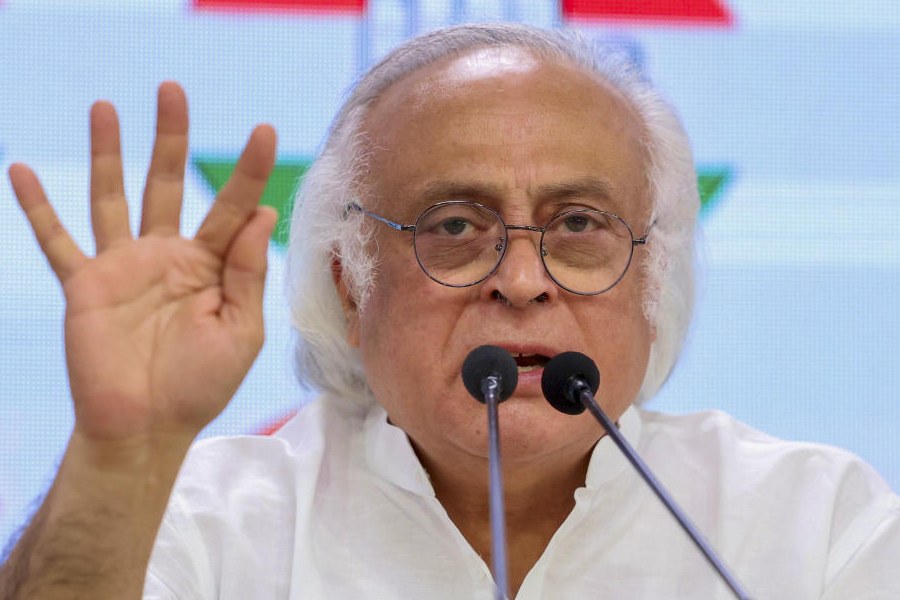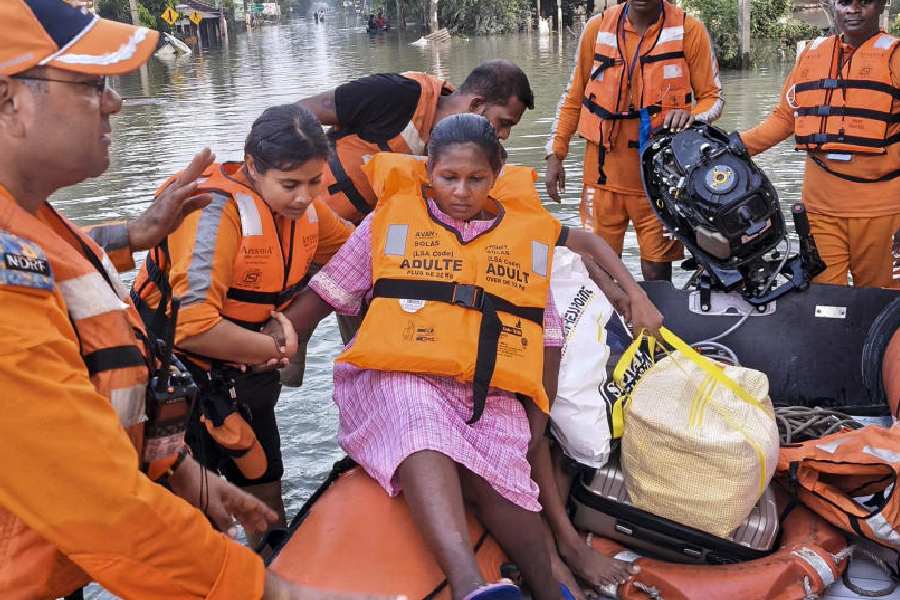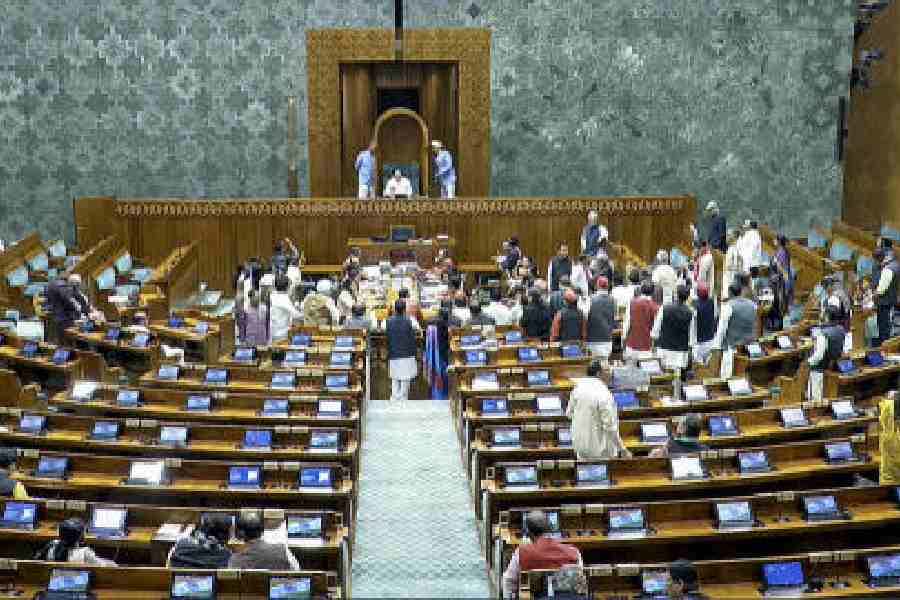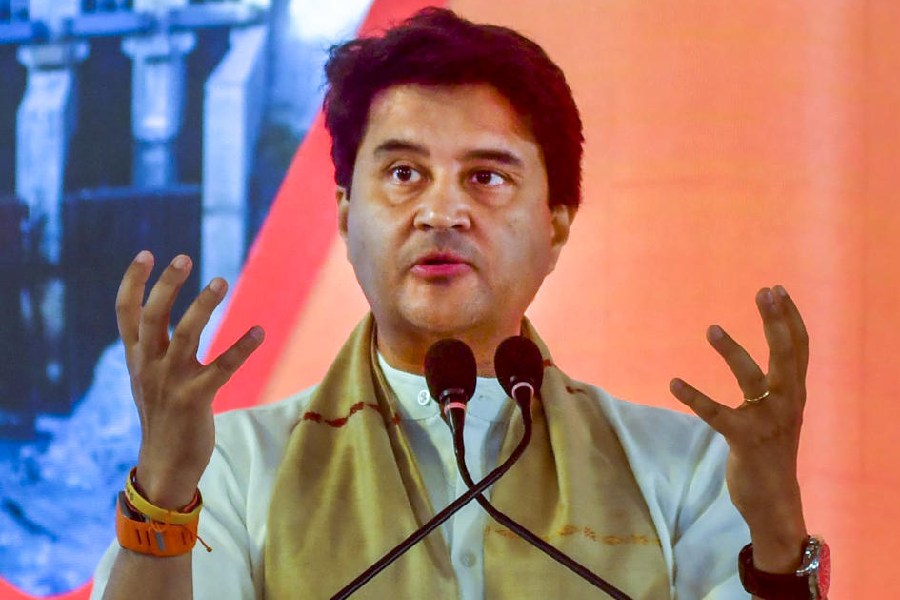Four images define the fury of this year’s monsoons. One from Punjab, the second from West Bengal, the third from Maharashtra, and the fourth from Uttarakhand; they relay devastation, grief and helplessness. Human unpreparedness, government callousness, and a media that is far removed from the big issues of our time eclipse the crisis gripping millions of Indians.
Standing crops — the only livelihood for millions — on at least 10 million hectares swept away, tens of cattle carried away in the sudden and flash floods that followed unprecedented downpours, and a painful loss of lives and property. The aftermath of the extreme rainfall events in many states will linger on. The paltry aid and on-camera embrace of the affected by political leaders is not enough; the Centre and the states must moot a reconstruction plan to fund people trying to rebuild their lives. Indian monsoons have always been a dynamic system which has its own moods. This year, many regions of India witnessed what climate scientists have been fearing for years.
The mundane week-by-week rainfall activity on the India Meteorological Department’s website shows a flurry of dark blue boxes this year, denoting large excesses from June to September. Over a hundred small and big landslides have disfigured large tracts of the Darjeeling hills; Punjab is trying to count the losses after the floods flattened over 1,600-1,900 villages in August-September, so is Uttarakhand and a large chunk of the Northeast; and Maharashtra has not yet had a respite to begin surveys.
Marathwada, a typically low-rainfall region in the rain-shadow zone, experienced incessant and torrential rains for two weeks; nearly 16 small seasonal rivulets and at least a hundred storage tanks filled up and overflowed, got breached, wrecking crops, homes, cattle sheds, and much more. A village in the drought-prone district of Dharashiv found itself ravaged in three days. For seven years in the last decade, this village faced droughts. A small seasonal river called Banganga, whose sands have been extracted by smugglers and whose bed left a layer of rocks and boulders, changed its course in 24 hours since it could not carry the torrential rainwater, snapped the village’s access roads, marooned homes, enveloped the farmlands, swept away about 300 heads of cattle, brought down the sheds, and finally carried away the food stocks and belongings of the people. By the time the rains stopped and the river waters ebbed, Chinchpur Dhage had nothing left to hold on to. One desperate villager told a Marathi news channel that it felt like the end of the world.
In Punjab, no district was left unaffected. Layers and layers of sand covering the farms are cause for concern for Punjab, India’s bread-basket. Orchards, tended to over the years, have been flattened. Homes ravaged. Belongings and documents lost. No wonder then that a dedicated suicide-prevention helpline in Marathwada is ringing non-stop, mainly in the wee hours — the callers are farmers of all age groups from the affected villages with nothing left to salvage. They are desperately seeking help. But nothing is immediate for the government unless there is an election to win. An already beleaguered peasantry across India is clueless about how to face climate aberrations year after year. Farm suicides continue unabated, even though many states are shying away from counting their dead.
Climate change is real and mitigation must transcend sly business moves — a solar park here or a wind mill there may align with climate targets but are no panacea for the real, on-ground preparedness for disasters foretold by a changing climate and mindless development. This year’s devastation by floods and extreme rainfall events is how it will be in the long term. The monsoon has technically ended but its aftermath will continue to haunt.











